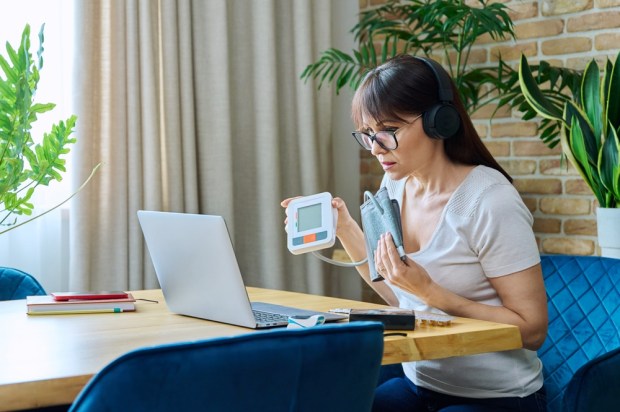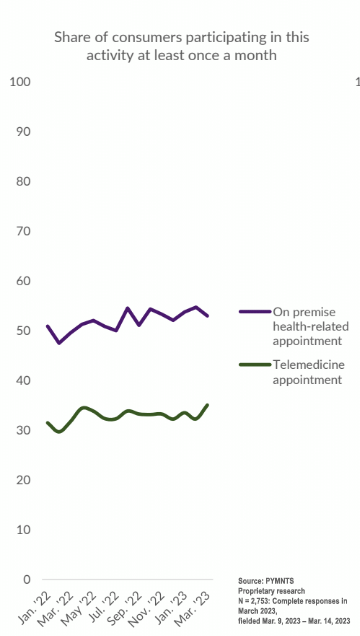The Virtual Doctor Will See You Now: 40% of Consumers Embrace Telemedicine

First popularized as a replacement for in-person healthcare visits during the pandemic, telemedicine has since found a more permanent footing for patients. The steady rate of consumers participating in at least monthly telemedicine appointments since January 2022 is noted in proprietary research prepared for the PYMNTS’ April “ConnectedEconomy™ Monthly Report.”

Consumer participation in telehealth during this time period ranges between approximately 30% and 40%, not far below the roughly 50% share with monthly in-person visits. Both figures held relatively stable throughout 2022 and 2023, albeit with telehealth trending up and physical visits trending down over the most recent months.
As this popularity might suggest, telemedicine has turned out to be a profitable venture for participating businesses. UnitedHealthcare and its Optum unit saw particular growth last year in its home health offerings and is on track to serve four million patients in 2023, nearly double that in 2021.
Even in this highly competitive atmosphere for investment dollars, venture capital firms are also fundraising for healthcare-related startups, with Patient21 recently receiving $108 million in Series C funding to expand its digital software platform. Servicing the provider side, OpenLoop in March raised $15 million in Series A funding for its white-label telehealth support platform, providing care for pharmacies, retailers, hospitals and health systems within the U.S.
Telemedicine’s benefits also extend to patients. For example, distance is no longer necessarily a barrier to seeing a chosen professional, and patients may feel more comfortable accessing certain specialty providers — such as mental health professionals — from home. Pure telehealth platform Sesame is one example of a healthcare-focused tech company finding its sector niche by opening access to medicine by offering 24/7 virtual access to doctors.
In an interview with PYMNTS’ Karen Webster, Sesame founder and CEO David Goldhill made a point about the importance of his company’s service many parents can relate to. “There are no pediatricians at 9 at night, and if you have young kids, as I do, there are no pediatric problems for some reason that exist during the day — 100% of them exist at night for evolutionary biological reasons none of us understand … We regularly criticize innovation for not working for all 325 million people 100% of the time. That’s one of the reasons we have so little consumer-directed innovation in healthcare. The reality is that video medicine creates broader access for a lot of people for a lot of conditions a lot of the time in a way that didn’t happen before.”
No longer a byproduct of pandemic panic, telemedicine has found its permanent place in today’s healthcare ecosystem, helping patients and providers alike. Its use is expected to continue steadily as consumers maintain a cross-channel experience for their medical interactions.

